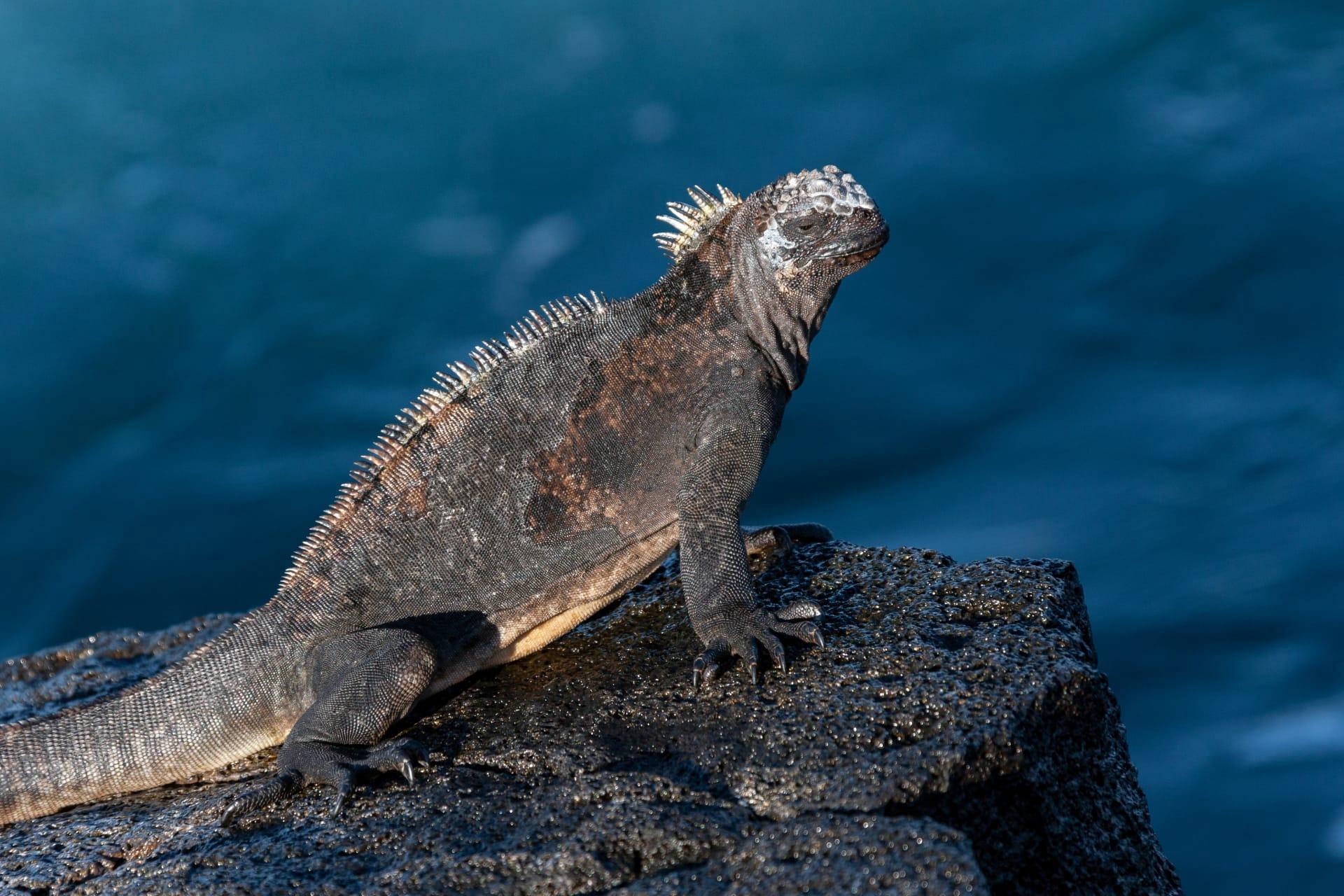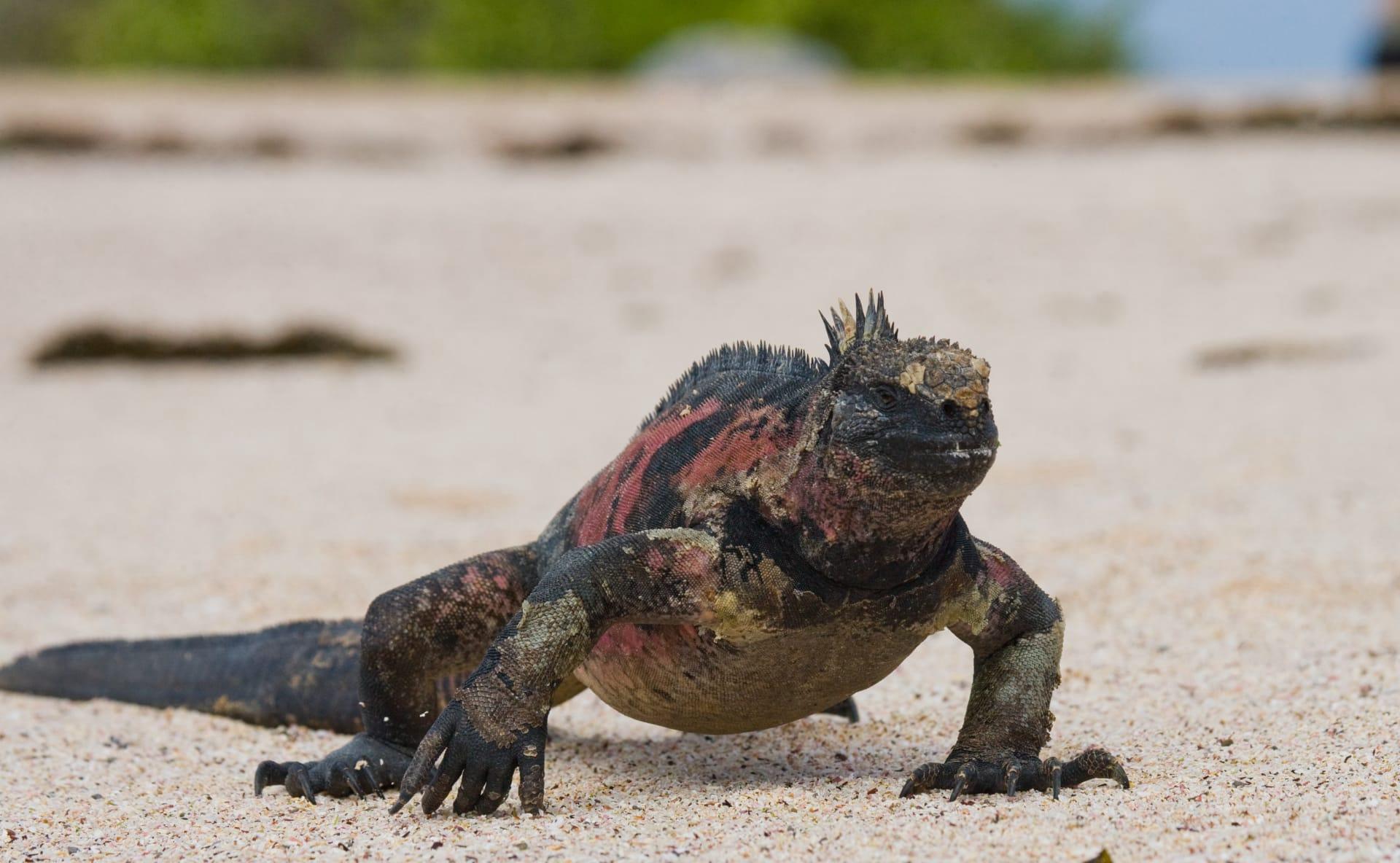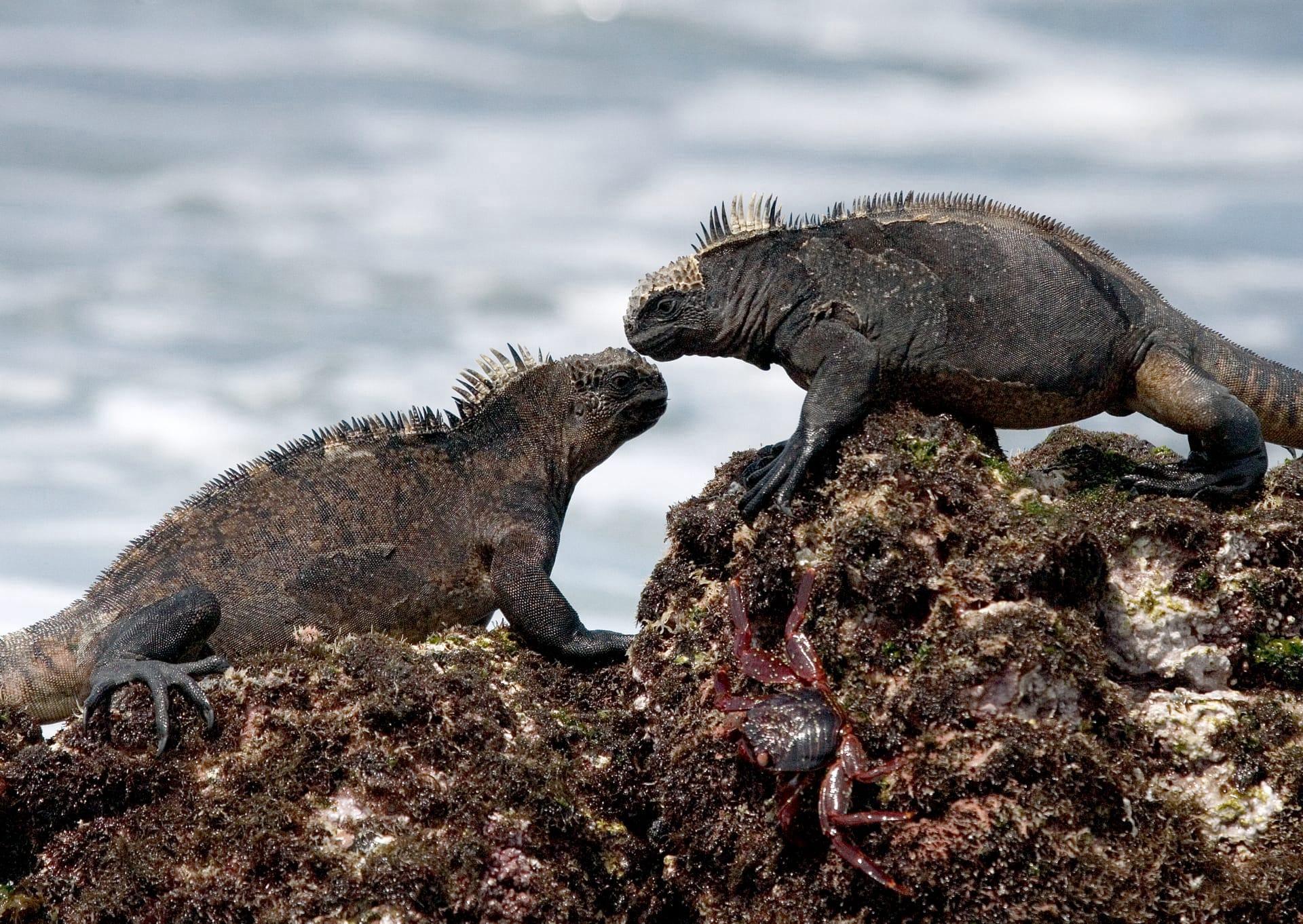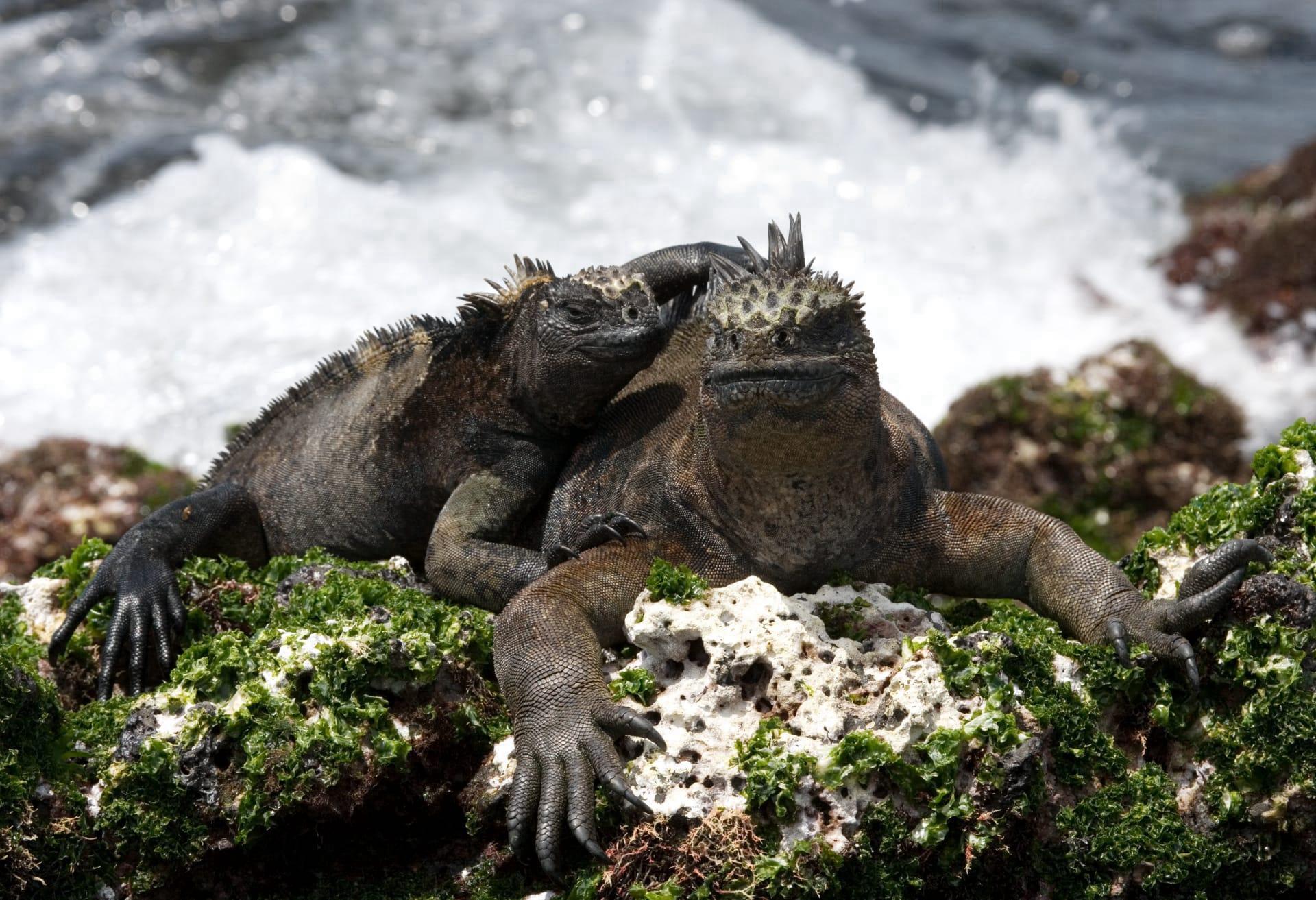Galapagos Iguana Trivia
- Home /
- Trivia Question /
- Animal /
- Galapagos Iguana Trivia
1
Question: What unique adaptation allows the Galapagos Iguana to survive in its harsh island environment?
Answer: The Galapagos Iguana has developed an exceptional adaptation to swim and forage in the sea, a rare trait for lizards. Its flattened tail enables efficient swimming, and its sharp claws grip rocks in strong currents. Remarkably, it can also shrink its size by up to 20% during food scarcity, reducing its energy requirements.
Question: How do Galapagos Iguanas maintain their body temperature in the variable island climate?
Answer: These iguanas are ectothermic, relying on external heat sources to regulate their body temperature. They bask on volcanic rocks under the sun to absorb heat, and their dark skin helps in thermoregulation. When too hot, they find shade or enter the water to cool down, effectively using their environment to maintain an optimal body temperature of around 35°C (95°F).

2
Question: Is it true that Galapagos Iguanas can live without fresh water?
Answer: Yes, Galapagos Iguanas can survive without direct intake of fresh water. They primarily hydrate through the moisture in the algae and plants they eat. Additionally, they have specialized nasal glands to excrete salt, which they ingest while feeding on marine algae, helping them maintain hydration and salt balance.
Question: Do Galapagos Iguanas have natural predators on the islands?
Answer: In their natural habitat, adult Galapagos Iguanas have few predators, mainly due to their size and the isolated nature of the islands. However, their eggs and young are vulnerable to introduced species like rats, cats, and dogs. Hawks and herons also prey on young iguanas.

3
Question: What is the lifespan of a Galapagos Iguana, and how does it impact their population?
Answer: Galapagos Iguanas can live up to 60 years, although the average is about 12-15 years. This long lifespan, combined with a slow reproductive rate, means population recovery can be slow, making them vulnerable to environmental changes and human impact.
Question: How do Galapagos Iguanas interact with other species on the islands?
Answer: These iguanas have a unique symbiotic relationship with certain birds, like finches and mockingbirds. These birds often feed on parasites found on the iguanas' skin. This mutualism benefits both - the birds get food, and the iguanas get rid of parasites, showcasing a fascinating aspect of island ecosystem dynamics.

4
Question: Can Galapagos Iguanas swim long distances, and why would they need to?
Answer: Galapagos Iguanas are strong swimmers, thanks to their streamlined bodies and tails. They can swim several kilometers between islands, mainly in search of food or new territories. This ability is crucial for their survival in an environment where food sources can be scarce and spread across different islands.
Question: What role do Galapagos Iguanas play in their ecosystem?
Answer: Galapagos Iguanas play a vital role in their ecosystem as herbivores. By feeding on algae and vegetation, they help control the growth of these plants, which in turn maintains the balance of marine and land ecosystems. Their role underscores the interconnectedness of life on the Galapagos Islands.

5
Question: How do Galapagos Iguanas reproduce, and what are their nesting habits?
Answer: Galapagos Iguanas exhibit unique mating behaviors. Males become territorial and display vivid colors to attract females. Females lay 2-25 eggs in burrows dug into the sand, which they fiercely guard. The eggs hatch after 3-4 months, with the young iguanas immediately independent.
Question: How have Galapagos Iguanas adapted to feed on the algae available around the islands?
Answer: These iguanas have evolved to feed on underwater algae, a primary food source. They have sharp teeth to scrape algae off rocks, and their digestive systems have adapted to process this high-fiber diet. Interestingly, different iguana populations have shown variations in snout shape and size, adapting to the specific types of algae available in their local habitats.